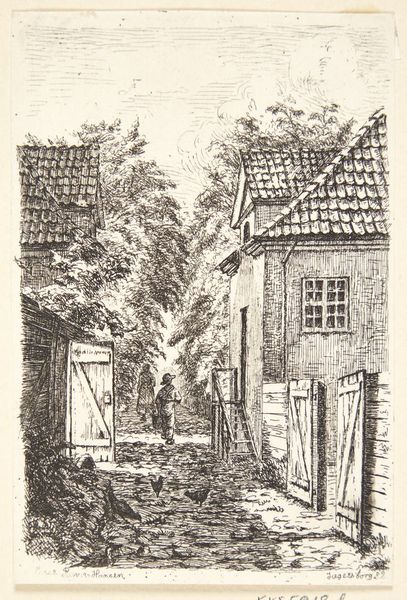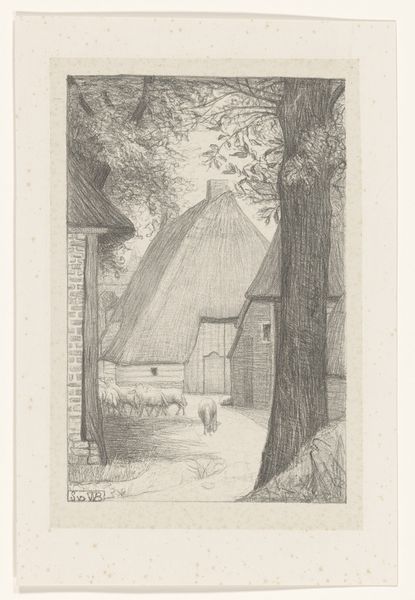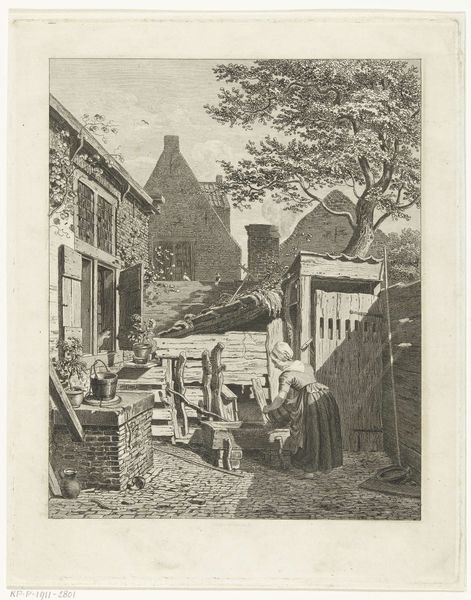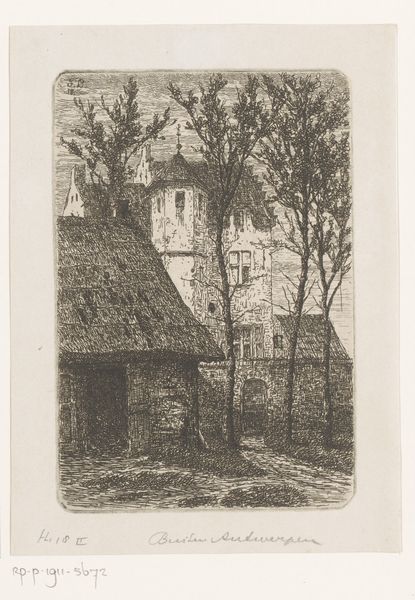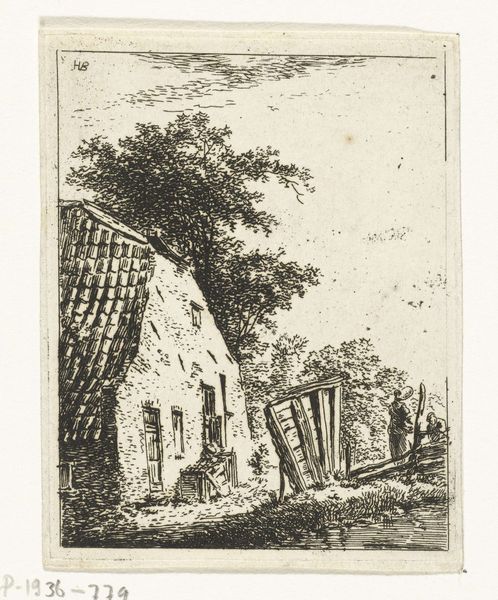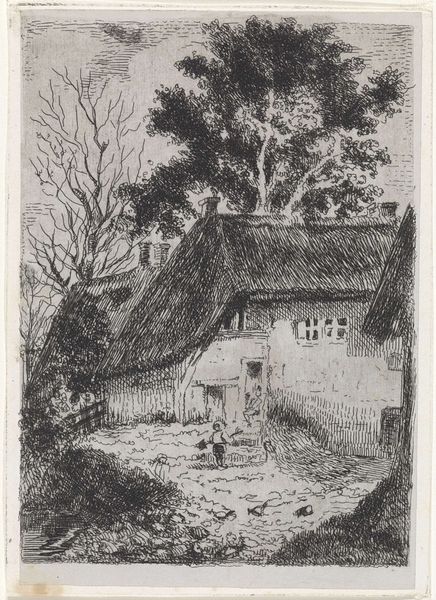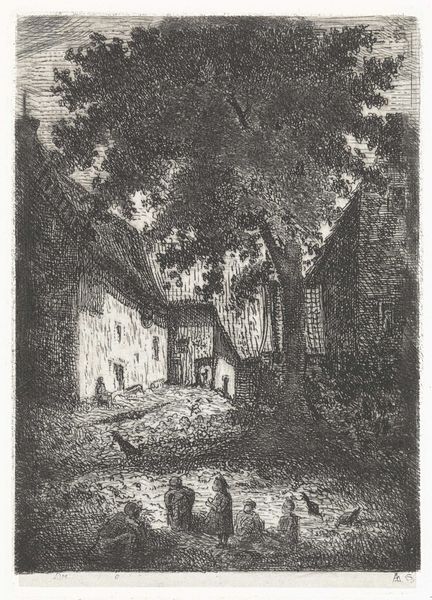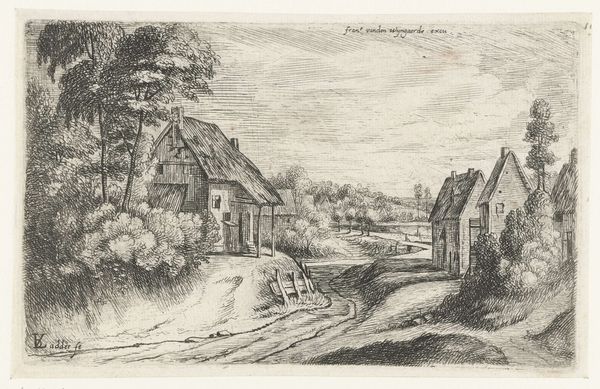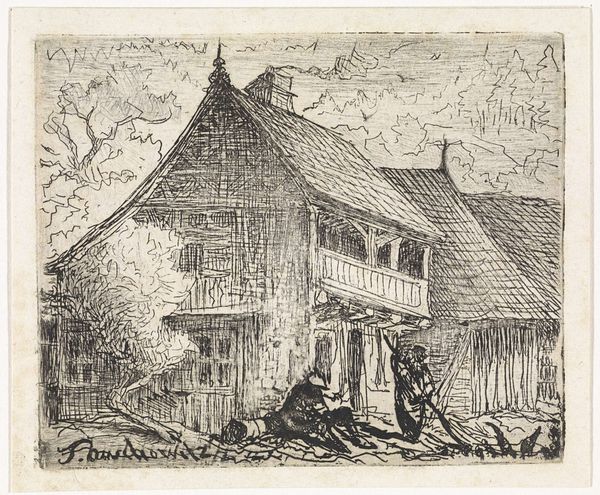
drawing, print, etching, paper, ink
#
drawing
# print
#
impressionism
#
etching
#
landscape
#
paper
#
ink
#
genre-painting
Dimensions: 117 mm (height) x 80 mm (width) (bladmål)
Curator: This etching by Louise Ravn-Hansen, titled "Street in Jægersborg," made between 1882 and 1883, depicts a quiet, somewhat obscured view into a Danish town. Editor: It feels almost secretive, doesn’t it? The dark, close hatching gives the scene an intimate and, dare I say, slightly claustrophobic air, like peering into someone's private world. Curator: Absolutely. Note how Ravn-Hansen uses line to evoke texture – the rough stonework, the feathered chickens, the tiled roofs. These details contribute to a sense of authenticity. Etching was experiencing a revival at the time. What associations would this image style carry for the people of its time? Editor: Knowing its place in time brings further questions; Jægersborg, then a small village, now suburban sprawl. An etching like this—was it a commentary on encroaching modernity or perhaps an elegy for a disappearing way of life in late 19th-century Denmark? Genre scenes, everyday encounters were a hallmark of social realism and impressionism that challenged the norms of earlier art production in European cultural centers, like Paris, by showing what really went on around them, instead of romantic fables of courtly elites. Curator: That's a keen insight. Considering its display within the Statens Museum for Kunst (SMK) today, we must also reflect upon its journey. From a probably underappreciated print during its production to the canon of Danish art history and its cultural representation in our present day, a symbolic echo chamber of sorts. The open barn door—almost a portal—what narrative possibilities does it unlock for the viewer? What does that opening do for chickens, and, more importantly, the figures lurking in the shade beyond? Editor: And what's compelling is how those figures, possibly women, fade into the background. It speaks to women's often-marginalized roles. Were their existences equally disappearing in a changing societal structure? The chickens could then almost act as emblems for this precarity! Or, dare I suggest, were chickens metaphors for those human inhabitants confined to the spaces "between" and at the edges of the image? Curator: Such powerful potential in what at first seems a simple street scene. Considering that Louise Ravn-Hansen herself negotiated the landscape of a male-dominated art world, it's not a leap to connect her vision to these larger social commentaries. Editor: Indeed, the power of a single image. From architectural texture to social text—there’s more depth than meets the eye, encouraging a reimagining of its original context through contemporary sensibilities. Curator: I agree entirely, the image's resonance across time invites endless conversations, solidifying its place as a relevant piece for continuous consideration.
Comments
No comments
Be the first to comment and join the conversation on the ultimate creative platform.
